The Creator Economy: Building Your Web3 Community
Looking at establishing and growing your Web3 community.
If you aren’t a medium member, you can read with no paywall via substack
This article is for Solana Scribes track “Growing your Web3 Community”. Thanks to Gary Club for sponsoring this event. Check them out here.
We love a good hackathon and lately one of the best has been the Solana Scribes event that we wrote about in this previous article. The reason why we think it’s great is because events like these draw in creators, builders and developers and allow them to work in an environment that can bring the best out of the project goals and capabilities.
This year's inaugural Scribes event had over 54 tracks available and provided a prize pool of 141k USDT for creators and developers that were able to land themselves a prize, but best of all we’re seeing a tonne of material promoting SOL as well as many smaller projects that are powered by SOL. With the current price hovering around $ 100 USD, it’s a great time to get established in web3 projects and start learning how to work your way around the ecosystem. In today's article, we’ll be looking at how to grow your Web 3 community on SOL. We’ll look at platforms, strategies and how to get things started. Let’s go!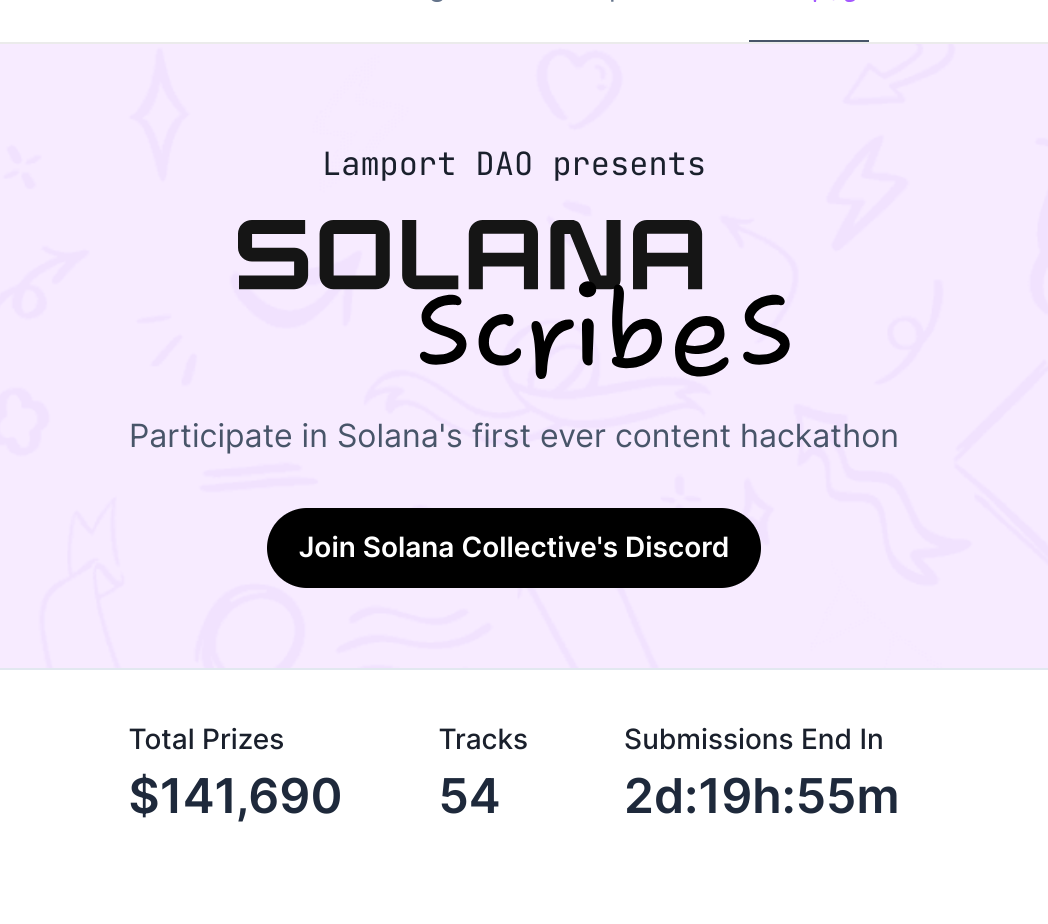
What is Web3?
Web3 is a decentralized and user-centric vision of the internet that aims to empower individuals and foster a more equitable digital environment. Unlike the traditional web (Web2), which relies on centralized entities for data storage and control, Web3 leverages blockchain technology to enable decentralized applications (dApps), smart contracts, and user-owned data. The core principles of Web3 include decentralization, transparency, and user sovereignty, emphasizing a shift from centralized authority to community-driven governance and ownership.
If we strip away the buzzwords and keep it simple, effectively Web3 gives us the means to monetize our content and make choices around privacy that benefit us, keeping these decisions out of the hands of large companies such as Meta and X.
Due to Web3 still being a maturing technology though, we’ll also need to go to great lengths to onboard new users and pick our platform carefully so we are able to build and create within our niche.
Our Community:
To talk about this we’ll use an example that covers our experiences growing a community on Bulb, a Solana-powered Web3 blogging site. In a little over 9 months of writing, we’ve managed to put out over 120 articles and grown our community to over 6,500 using a few strategies to help promote engagement and get people reading and sharing content. While the strategies may vary from platform to platform, you should still find some useful tips within regardless.
Bulb has also seen an explosion of growth recently. Sporting a little over 4000 members when we first signed up it’s now grown to over 50,000 users as well as growing its monthly post and site traffic as well. Bulb shows the concept of a thriving Web3-based community is still possible. It also shows the importance of leveraging the community to become part of that growth journey. 9 months, 128 posts 6.65k followers. Source: Author
9 months, 128 posts 6.65k followers. Source: Author
Getting Started:
Like any creator, it’s essential to pick your niche and play to your strengths. If your interests are cryptocurrency and cybersecurity however you’re a terrible cook then it’s fair to say you probably shouldn’t be running a food blog. By picking something you’re passionate about, you’ll be able to speak clearly about your subject material as well as have that passion shine through into your work.
One thing that is less considered though is the platform you may use to establish yourself and while there's plenty to choose from, it’s our belief that the right platform can make you or break you and that’s one thing that’s easy to overlook when you're getting started.
Consider this. We have an article with the potential to go viral. Where are we going to see the most engagement? On the site where there’s an active community that’s engaged with good work and will share, and comment on active content that interests them? Or the site that’s glitchy, spammy and doesn’t quite work properly yet? Research shows you have but seconds to capture the eyes of a reader and hold them. This task becomes much harder if your work is able to be lost in the noise.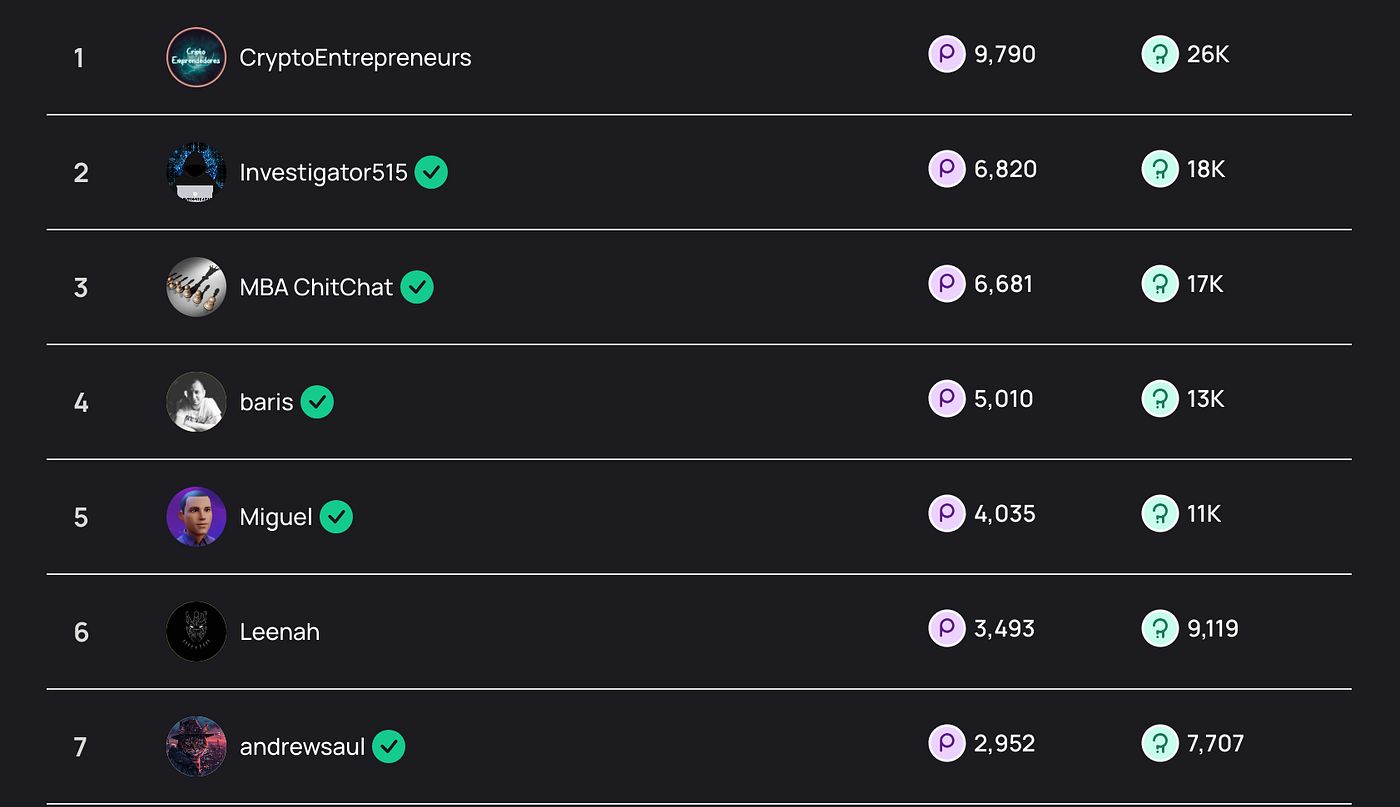 Pick the right site and have a plan and you can stack tokens rather than give away your privacy. Source: Bulbapp.io
Pick the right site and have a plan and you can stack tokens rather than give away your privacy. Source: Bulbapp.io
Even your choice of Blockchain is relevant too. While NFT’s gained most of their hype on Ethereum, gas fees were and continue to be problematic for L1 solutions. This means that L2 options or even different blockchains entirely may be a better option.
When you’re considering transactions at the rate you’ll see from social media, both gas and speed become more essential to the end goal. Of course, this is why solutions like Solana become great options, but you’re here and you’re bullish so we probably don’t need to sell you on SOL.
Lesson: Pick your Chain and your Niche. Getting one, or both of these incorrect will make things far more difficult for your journey.
Pitfalls And Risks
Of course, you can have the best plan in the world and still fail. In the crypto world, blockchains rise and peak and tokens moon and bounce. Like in the real world, there’s often no free ride however a few pointers will get you heading in the right direction regardless of your end choice.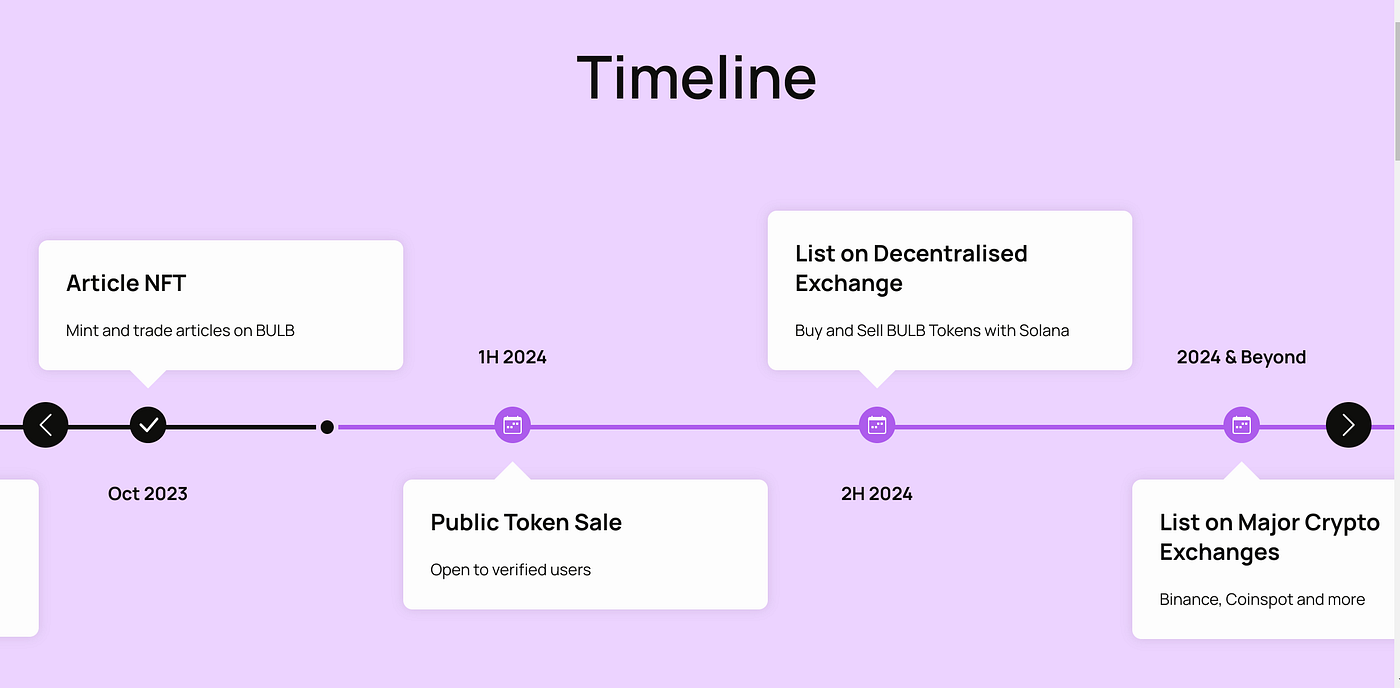 A strong dev team and a willingness to adopt will take a project a very long way. Source: Author
A strong dev team and a willingness to adopt will take a project a very long way. Source: Author
Realistically a project with an absent or poor dev team isn’t a wise pick. You can almost say the same about marketing and transparency as well as these three things are all essential for a functioning and well-implemented project. While token prices will rise and fall spam will always be an issue and platforms will need to evolve to remain competitive in the space.
While selecting a project that has a good track record with this won’t be the only solution, it’s one step you can take prior to getting established that will tip the odds in your favour.
Lesson: You need more than just potential to succeed. Picking a project with a good roadmap and an active team helps bridge some of the “what ifs” as you get started. Problems shouldn’t make or break a platform but how said platform deals with them will.
Actual Engagement
One thing that’s extremely important is the type of engagement you’re seeing on a platform. Monetisation aside, the issue of bots and artificially created or boosted content is real and having to deal with that remains a real challenge for new platforms, particularly those based around Web3.
Because of this what you're generating and how you're presenting it becomes extremely important with regard to establishing your community. People still look for quality content that appeals to them, and have a distinct tendency to overlook AI-generated content due to its somewhat dry and stale tone.
That same artificial tone can be delivered by humans who aren’t passionate about their subject matter or don’t have any interest in engaging with their audience. Contrary to this creators who understand their subject material and are able to put it into terms their audience enjoys will do far better than those who can't.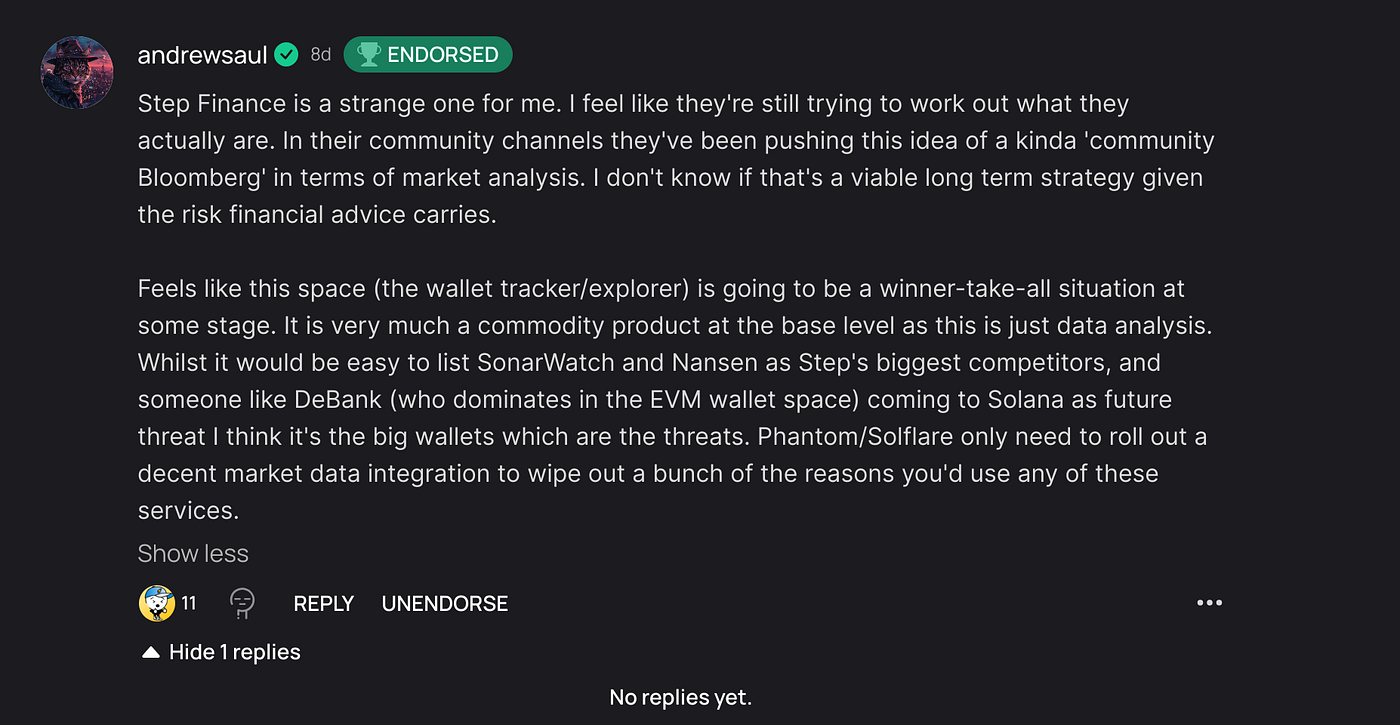 The most successful creators engage with their community in both directions, sharing information projects and other useful tips with the community. Source: Author
The most successful creators engage with their community in both directions, sharing information projects and other useful tips with the community. Source: Author
However, this river really should flow both ways. And this means that creators should engage, comment and share content made by others regularly as well. If you read an article and enjoyed it, consider leaving a comment explaining why.
Authors are also readers and having engaged with their work means there’s a good chance they’ll take a look at yours as well.
Lesson: While there’s plenty of fake engagement and points farming in Web3, the best creators are the ones that both create engagement on their work as well as engage with others. Share the love, and promote growth. It’s that simple.
Leveraging Monetisation
While Web2 creators often need to convince people to open their wallets to achieve monetisation, one of the best things about Web3 environments is that we don’t need to do that at all! The days of being underpaid for your work are fast drawing to a close. Source: Author
The days of being underpaid for your work are fast drawing to a close. Source: Author
Firstly, we’re stacking tokens simply by writing and engaging with our newly growing audience so we’re far ahead of the traditional methods already. But also we can often earn tokens by using referrals and other strategies like airdrop farming to both earn tokens and enable our community to do the same.
While no one wants to be shilled a meme coin, the abundance of blockchain-based projects means that there are also some really ingenious projects and technology in play as well. While it won’t work for everyone, selectively sharing some of these projects that may interest your community can be a good thing to assist in providing growth, onboarding others and maybe even earning some tokens along the way.
But remember. In the crypto space, we should encourage people to DYOR before getting involved with a project rather than giving direct financial advice. Look after your audience and they’ll look after you.
Lesson: Monetisation on Web 3 means being yourself and engaging with your audience. We can earn by simply creating an engaging space for discussions without having to shill products. Take advantage of that by researching projects that may interest your audience too and releasing quality articles that people will (hopefully) enjoy reading.
The Secret Sauce is YOU
While there are plenty of incidental things you can do to help your blog or project succeed the fact of the matter is that the best asset you have to assist with this is in fact, yourself. Don’t let others set the pace. Back yourself and be consistent, the algorithm will love you. Source: Author
Don’t let others set the pace. Back yourself and be consistent, the algorithm will love you. Source: Author
Firstly, we’re paid for engagement and creating quality content which as a writer or author should be all you're doing. This means it's your creativity and motivation that’ll be rewarded, not anyone else's.
For the most part, while this means there’s a bit of pressure that comes with these there's also a distinct freedom in choosing your own adventure. While you’re on the way to building your community you might pick up the occasional hater along the way, and that’s okay too because you can’t please everyone. But trust in yourself, be consistent with your writing and the growth will come.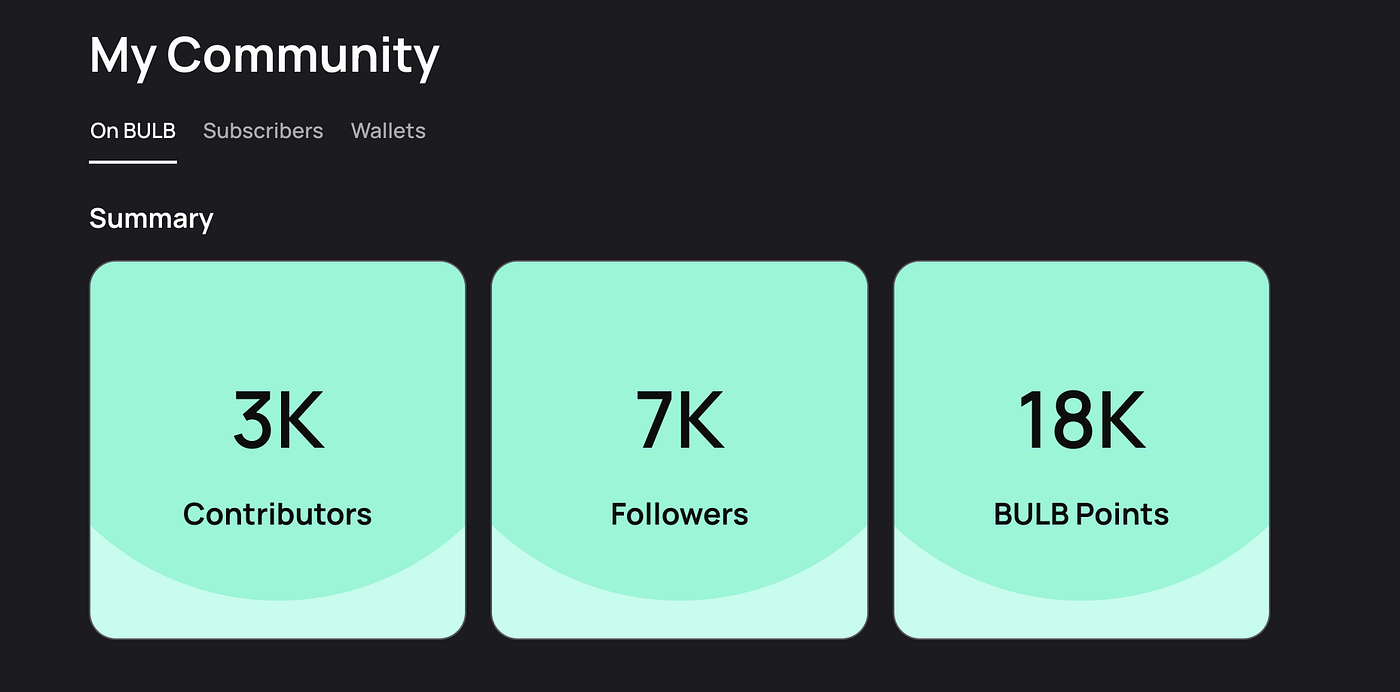 Use analytics and community data to ascertain what works best in terms of times, topics and schedules. Source: Author.
Use analytics and community data to ascertain what works best in terms of times, topics and schedules. Source: Author.
The best creators are the ones who can create quality pieces and present them multiple times per week. So creating a publishing schedule and holding back work so you can create a consistent publishing timeline helps build excitement in your work and allows you to put together large multi-piece articles or more in-depth walkthroughs. Leverage this to your advantage, because most algorithms love consistency.
Lesson: Producing consistently will help keep your work moving along. Research the algorithm for your platform then experiment to see what works. Data is fun, so leverage it to help with your growth.
Why Not Have Both?
While the brief is “Growing Our Web3 Community” the fact is we don’t have to stick to Web3 protocols in doing so. Why not have the best of both worlds and use your Web2 accounts to cross-promote your work and encourage others to join in the Web3 benefits while doing so.
By sharing your work on X or Instagram you might find new readers on new community members who are interested in projects your reviewing or topics you’re writing about.
You can also use retweets and things like crypto giveaways to help promote engagement and bring new readers to your feeds and channels. While we wouldn’t encourage people to stick with Web2 entirely we do feel that it still has plenty to offer the new creator as part of a tandem or multifaceted approach. Web2 environments can be great for promoting your working and acquiring new readers. You might even be able to onboard some. Source: Author
Web2 environments can be great for promoting your working and acquiring new readers. You might even be able to onboard some. Source: Author
Lesson: Move with what works. What works for others may not work for you so don’t be scared to use traditional social media and promote your self where possible without overdoing it. It’ll help you find your spot in cyberspace.
Final Words
While this article is by no means the definitive approach to growing your Web3 community we hope you’ve still found useful tips, points and strategies to help assist in growing your presence within a Web3 environment.
We’d also like to put out a quick thanks to Solana, Superteam Earn and Gary Club for putting forward this track for the Solana Scribes Hackathon.
What tips do you have for growing your Web3 Community?? Think we missed anything important?? Why don’t you jump into the comments and share your opinion, we’d love to hear from you.
And if you aren’t involved with Web 3 yet, jump in to some of our favourite projects here:
Bulb Read /Write to Earn
Publish0x Read to Earn
Gary.Club Social Media
Medium has recently made some algorithm changes to improve the discoverability of articles like this one. These changes are designed to ensure that high-quality content reaches a wider audience, and your engagement plays a crucial role in making that happen.
If you found this article insightful, informative, or entertaining, we kindly encourage you to show your support. Clapping for this article not only lets the author know that their work is appreciated but also helps boost its visibility to others who might benefit from it.
🌟 Enjoyed this article? Support our work and join the community! 🌟
💙 Support me on Ko-fi: Investigator515
📢 Join our OSINT Telegram channel for exclusive updates or
📢 Follow our crypto Telegram for the latest giveaways
🐦 Follow us on Twitter and
🟦 We’re now on Bluesky!
🔗 Articles we think you’ll like:
- Signals From Space: The International Space Station
- Ukraine OSINT: Strava Strikes Again
✉️ Want more content like this? Sign up for email updates




































